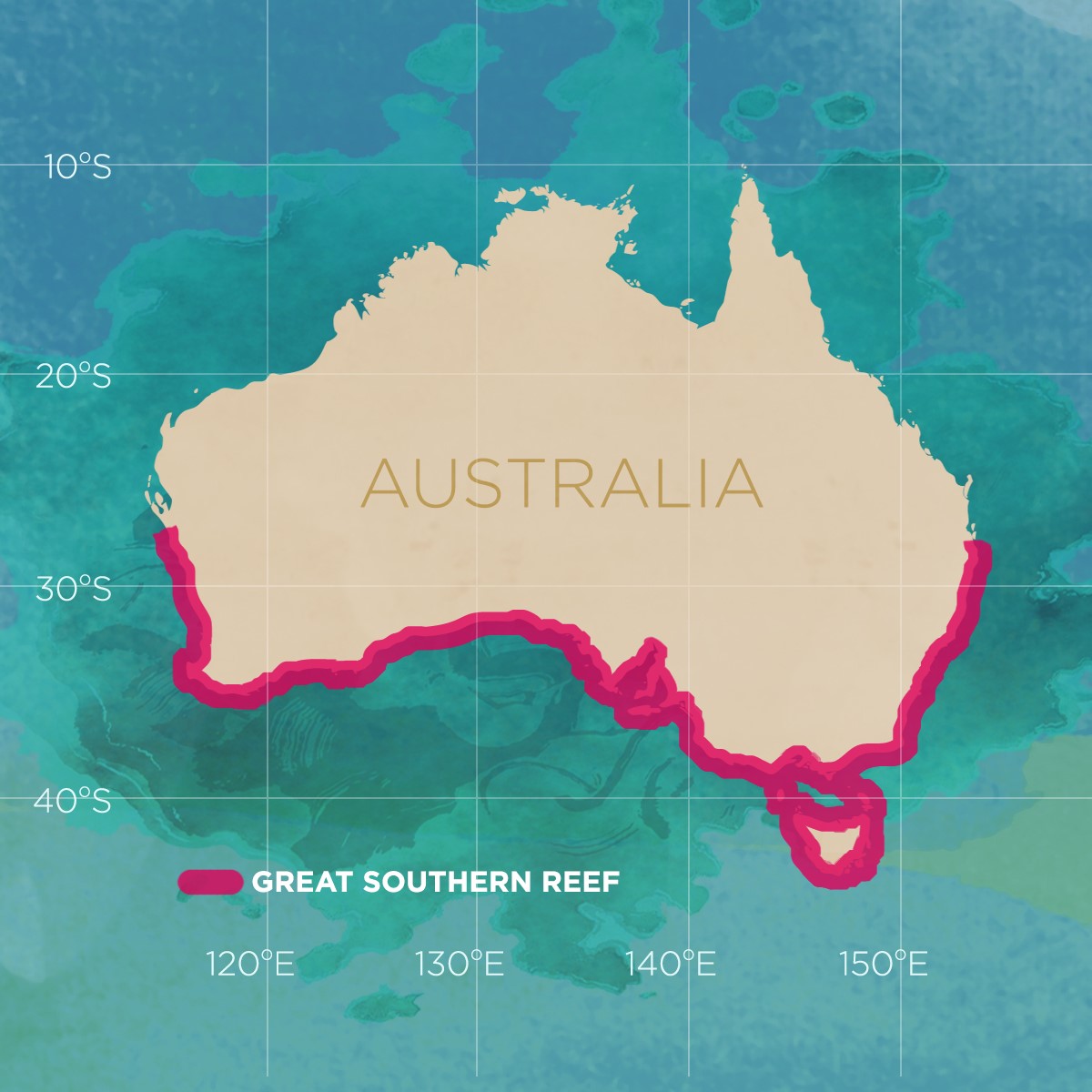Who’s heard of the Great Southern Reef?
Although we tend to associate the word ‘reef’ with tropical coral reefs, those found in temperate areas—regions with intermediate climate conditions that are not tropical or polar—are also significant and important.
The Great Southern Reef is a massive series of reefs that extend around Australia’s southern coastline, covering around 71,000 square kilometres from New South Wales around the southern coastline of Australia to Kalbarri in Western Australia. The reef’s main feature is its extensive kelp seaweed forests—perhaps not as colourful as tropical corals, but beauty is in the eye of the beholder: these kelp forests are some of the most productive ecosystems on the planet. They support sponges, crustaceans, fish, bryozoans (small colonial animals that form exoskeletons of chitin or calcium carbonate), echinoderms (such as starfish and sea urchins) and many types of mollusc (snails and shellfish). Many species living on the Great Southern Reef—like the weedy seadragon (Phyllopteryx taeniolatus)—are not found anywhere else on Earth.
It’s estimated that the Great Southern Reef contributes more than $10 billion a year to the Australian economy. The major fisheries in the reef are the rock lobster (worth around $375 million/year) and abalone (worth around $134 million/year). Tourism is also important—it’s estimated that the reef directly supports activities worth nearly $10 billion/year, while the total tourism from the reef and adjacent coastal areas amounts to around $40 billion/year.

So this reef is clearly important. But parts of it look like they're in trouble.
A recent study found widespread loss of kelp forests following a marine heatwave in 2011. Surveys of 65 reefs along the Western Australian coast found that the area covered by kelp forests declined by 43 per cent by 2013, with the range of the forests’ cover decreasing by around 100 kilometres, and their area shrinking by around 370 square kilometres. Even by late 2015, nearly five years after the heatwave, there were no indications that the kelp forests were recovering.
The researchers documented a shift from kelp to turf-forming seaweeds and sub-tropical and tropical fish species that thrive in warmer waters. Shifts in the abundance and diversity of species of sea urchins and gastropods were also noted.
The Indian Ocean along the coast of Western Australia is a global warming hotspot—it’s high up on the list of places around the world experiencing high rates of ocean warming. This region has seen a temperature increase of 0.65° C over the past 50 years.
Warmer temperatures are shifting southwards at a rate of 20 to 50 kilometres per decade. If this trend continues, we could soon see a complete transformation of this region of the Great Southern Reef—away from temperate kelp forests to more tropical species.
And while everyone loves tropical fish, the widespread loss of the kelp forests of the Great Southern Reef would be devastating to the rich and diverse ecosystems they support.






